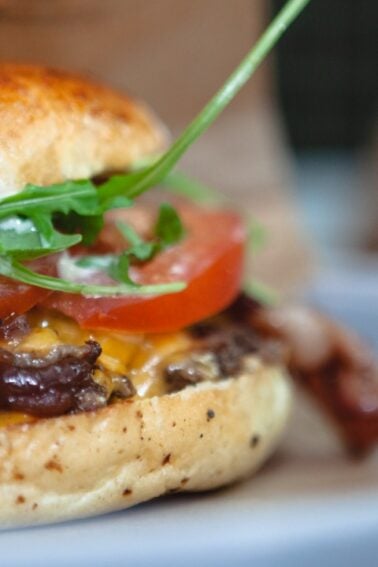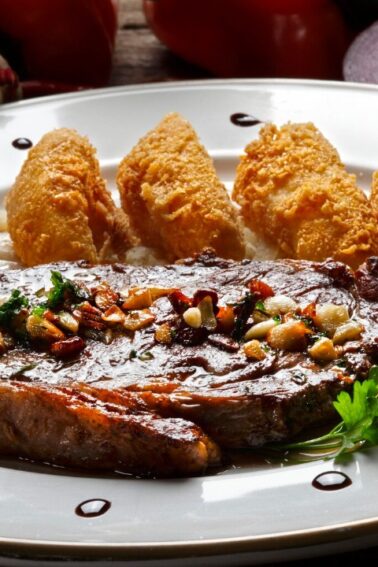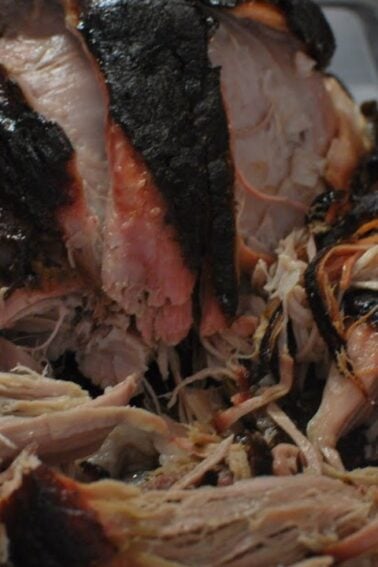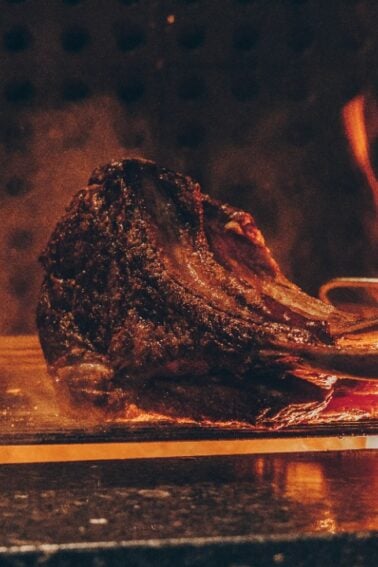Lamb and beef may share similarities in how they’re butchered, but each brings its own character to the table. From flavor and texture to nutrition and cooking methods, the two meats can deliver very different experiences depending on the cut you choose. Understanding how lamb cuts compare to beef cuts not only helps you shop with confidence but also ensures you prepare them in ways that highlight their best qualities.
Understanding the Basic Cuts: Lamb Vs Beef

Lamb cuts primarily comprise the shoulder, rack, loin, and leg. The shoulder is typically used for slow-cooking methods; the rack is prized for its tender meat and can be roasted or grilled; the loin can be cut into chops or roasted as a whole; and the leg, known for its robust flavor, is excellent for roasting. On the other hand, beef cuts include chuck, rib, loin, and round.
The chuck is often used for stews and roasts; the rib yields rich, flavorful steaks; the loin produces tender cuts like the T-bone and porterhouse; and the round, though lean and less tender, is ideal for roasting and slow-cooking. Both lamb and beef cuts share similarities in their usage but differ in flavor, texture, and tenderness.
Nutritional Value and Health Implications

When comparing the nutritional value of lamb and beef cuts, both are excellent sources of protein and provide essential vitamins and minerals. However, lamb typically contains slightly more fat, including saturated fat, though the difference varies significantly by cut and preparation method. This fat content contributes to lamb’s distinct, rich flavor.
While lamb contains marginally more calories and cholesterol than beef, the differences are minimal, with lamb containing about 283 calories vs beef’s 277 calories per 100g, and 97mg vs 88mg of cholesterol, respectively (via Souper Sage Nutrition Comparison; FoodStruct Nutrition Analysis).
Beef offers a substantial nutrient profile with fat content that varies considerably by cut – some cuts being leaner than comparable lamb cuts, while others contain similar or higher fat levels (January AI Nutrition Comparison; Street Smart Nutrition). It is a rich source of iron, zinc, and B vitamins. While it has less fat than lamb, beef still contains a significant amount of saturated fat and cholesterol, which should be considered if you’re monitoring your intake for health reasons.
When comparing lamb and beef, it’s important to remember that nutritional content varies dramatically between different cuts of the same animal (FoodStruct Nutrition Analysis; January AI). For example, a lamb loin chop will have significantly different fat and calorie content compared to a lamb shoulder chop, just as a beef tenderloin differs greatly from beef chuck. Always consider the specific cut when making nutritional comparisons or cooking decisions.
Flavor Profile and Texture

The distinct flavors of lamb and beef cuts are largely influenced by their fat content, the animal’s diet, age at slaughter, and whether the animal was grass-fed or grain-fed (The Nutrition Insider; Street Smart Nutrition).
Lamb can have a rich flavor, which is stronger in the shoulder and leg cuts. On the other hand, beef cuts have a universal meaty flavor, with variations in richness depending on the cut. The texture of different cuts of lamb and beef can vary significantly. For instance, lamb loin and rack are tender and succulent, while the shoulder and leg can be tougher but become tender with slow-cooking. Similarly, beef loin and rib cuts are tender and juicy, while chuck and round cuts require slow-cooking to achieve a tender texture.
Cooking Methods for Lamb and Beef Cuts

For lamb cuts, roasting, grilling, and braising are recommended. Roasting is suited for cuts like the rack and leg, which can withstand high oven temperatures and still remain juicy. Grilling is ideal for smaller cuts like chops, which cook quickly and gain a delicious charred exterior. Braising, a slow-cooking method, is perfect for tougher cuts like the shoulder, as the long cooking time breaks down the meat’s connective tissues, resulting in a tender, flavorful dish.
For beef cuts, grilling, roasting, slow-cooking, and broiling are recommended. Grilling is perfect for tender cuts like the rib and loin, which cook quickly at high temperatures. Roasting and slow-cooking are appropriate for tougher cuts like the chuck and round, which become tender and flavorful over a longer cooking time. Broiling, a technique that involves cooking under high heat, is ideal for thinner cuts, as it creates a deliciously seared exterior while keeping the inside tender and juicy.
The chosen cooking method can significantly impact the flavor and texture of each cut, enhancing their unique characteristics and ensuring a satisfying culinary experience.
Whether choosing lamb or beef, selecting the right cut for your cooking method and nutritional goals is key. Both meats offer excellent protein sources with their own unique characteristics—lamb with its distinctive flavor and beneficial fat profile, and beef with its versatility and range of textures across different cuts (Healthline Nutrition Facts; Signos Health Analysis).
Hungry for more? Subscribe to our newsletter and become part of the world’s best meat community! From grilling tips to smoky secrets, we send you the best recipes, guides, and expert advice to master every cut.













